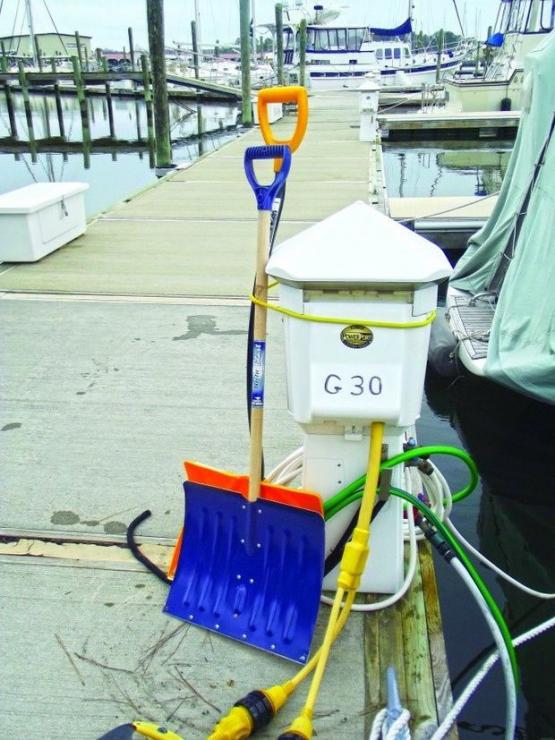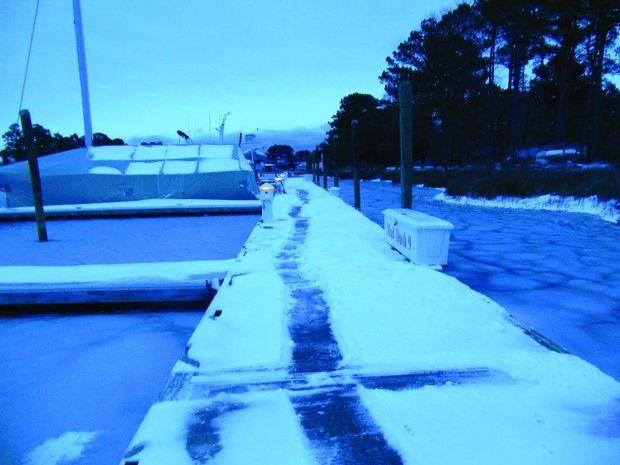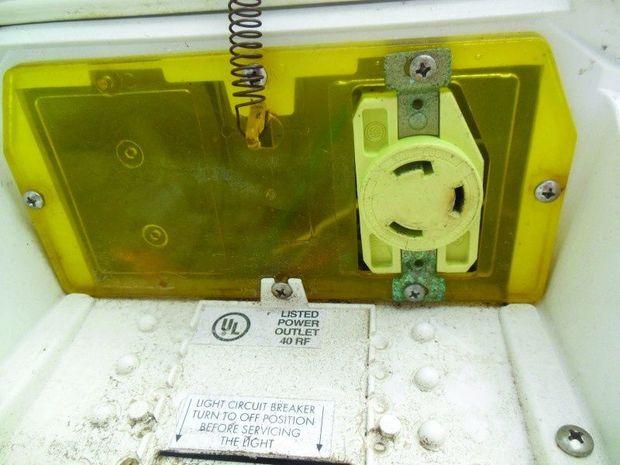Whenever you meet new people, there is always a script of questions and answers you follow as you try to quickly assess these newcomers. The questions identify where you live, where you work, what your status is, and all the rest of the games we play trying to feel secure in who we are and how we are doing. Invariably we want to know where we are from and where we live.
Often when we meet new people such as David and Donna Dirt Dweller who have never imagined life on a boat, the conversation will go like this: The Dirt Dwellers ask, “So Tom and Cristina, where do you live?” We answer, “We live at Port Downtown Marina.” Next question: “Oh really? I did not know they had condos down there.” We reply, “They don’t. We live on a boat.” The DDs ask, “Oh really? That’s cool. But where do you live in the winter?” “We live on the boat.” “Really, that’s cool. But where do you live when it is icy and snowy?” And again we answer, “We live on the boat.” They: “But do you have heat?” “Yes we have heat.” They: “Really? That’s cool. But how do you cook?” “We have a stove and an oven. We have a refrigerator; we have a bathroom, and a shower. We have washing machine. We even have a television.” Dirt Dwellers, “Oh really? I didn’t know you could do that. That’s cool.”
Cristina and I have lived aboard for nearly six years here on the Chesapeake. We have been here through snow and ice, gale and hurricane. Many boaters are jealous of us and our lifestyle.

We have found that living aboard in winter is generally about water management: how to get water into the boat and how to get it out. The first month of our first winter we learned about condensation. The windows had water sheeting off them in the mornings when the temps dropped into the 30s. On cold days, water would collect behind the head liner and would run out and land on our heads, furniture, and the floor anytime the boat rocked. The first step was to use window film to cover all of the windows. That solved the condensation on the glass. Then I took down the overhead panels and added a layer of foam behind the panels to insulate he cabin roof further and eliminate the condensation there. Next we got a small dehumidifier: This was a miraculous addition. Whenever the temperature drops below 50 degrees outside, we turn it on and let it run. It circulates and dries the air, and it adds a certain amount of heat as well. This is arguably the most important appliance we have added to our boat since we moved aboard.
If there is one tip we can pass along, it is a lesson we learned too slowly; heat and air circulation will make life comfortable and eliminate condensation. Yes, your electric bills will be high in the dead of winter. Get over it. An extra $25-50 per month in electricity will move your comfort to a whole new level. Do not try and scrimp on heat. We had to learn this lesson on our own, despite having been given this tip by other liveaboards. Getting water to the boat was a known concern. The first winter we were in a slip about 400 feet from a frost-free faucet. Stretching out 400 feet of hose may have seemed like a big project, but our worry was that residual water in the hose would freeze and block our water supply for weeks on end. Our solution was simple. We laid our hose under the dock, on the bottom of the creek, and it never froze because it was under water. After the water tank was filled, we disconnected the hose at each end and drained the water in it down to the level of the creek water. Voila, the ends of the hose above the creek level have air in them, and water in the hose below the creek water level will not freeze.
We have wintered in three different marinas on the Chesapeake and have always found a frost-free faucet where we could connect and fill our tanks every week or two as needed. Our two most recent winters required 600 feet of hose, but all in all, it only takes a couple of hours in late November to lay it out in the creek, and then in the early spring pull it ashore, wipe it down, and put it away. (Do not put it out too early in the fall, and do pull it in as early as you can in the spring. Cleaning barnacles off 600 feet of hose is no fun—don’t ask how I know that.) Compare that to the usual liveaboard solution which is to run the hose on top of the dock and coil it up after each use. It is really an elegant solution.

Water in and water out issues now resolved, there are also a few air in and air out concerns. They say that in houses, 30 percent of the heat loss is through air leaks, and on boats it is probably more. For one thing, your diesel engine consumes vast quantities of air when it is running. Engine rooms are well ventilated. Find and seal all openings to the engine room. The improvement we found after taping plastic over our engine room vents was dramatic. Sliding windows are very poorly sealed. You may find weather stripping foam that will improve the seal, but we learned in our second year that a strip of tape applied over the joint made all the difference in the world. Tape the slider joint on the outside, and film the window on the inside. The air loss will be eliminated.

While we are speaking of tape, this is the one application on a boat where duct tape is a very poor choice. If you use duct tape to seal your boat, you will have a mess of sticky residue to clean off in the spring. Don’t use it! The only tape you should use for this is shrink wrap tape. It is designed for exterior application, leaves no residue, and in fact will usually last for two seasons. A roll of shrink wrap tape is fairly expensive, but the roll is about five to 10 times as long as a roll of duct tape. Apply it wisely, and one roll will last you a decade.
There are many other little tricks you will learn to seal and insulate your home. Simple and quite effective areas to insulate are the deck hatches. We have sun covers for our hatches, and in the winter we put a half inch of foam insulation between the Lexan and the Sunbrella cover. (Two layers of bubble wrap work well, but so does the sheet foam that you buy for packing fragile items.) We generally find it takes two weekends each fall to prepare for winter, and it only takes about half a day in the spring to get ready to go again. This seems to me to be a lot easier and is preferable to raking leaves and mowing grass that our new friends David and Donna Dirt Dweller are committed to.
by Tom Hale